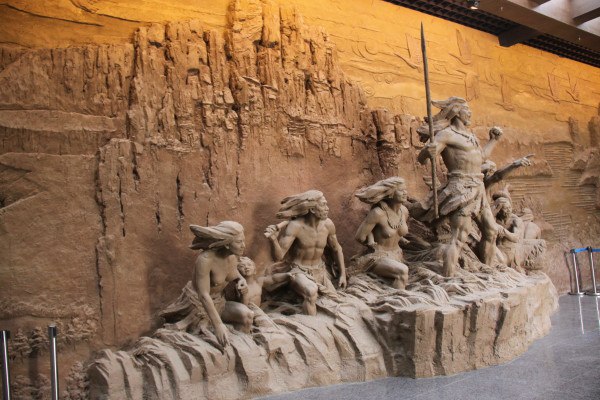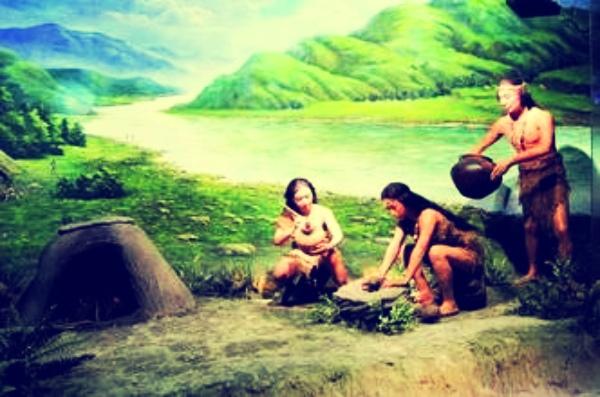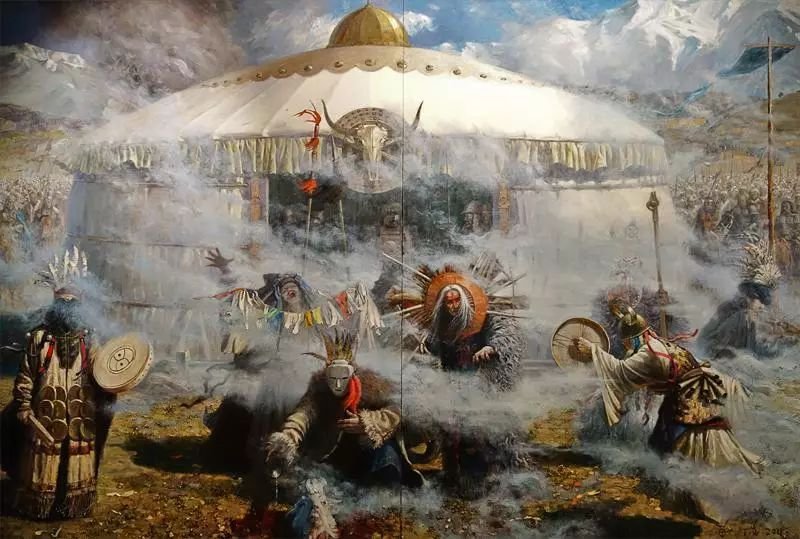Glimmer of Civilization in Legendary Times
4 min readAround 3000 BC, the Tigris and Euphrates Valley in West Asia and Egypt in Africa entered the threshold of culture. The Yellow River Valley and the middle and lower reaches of the Yangtze River in China also showed a glimmer of culture.
The history of remote antiquity was passed down mainly through oral myths and legends. Such memories later were recorded in written documents, which narrate the activities of early humans. Huangdi(Yellow Emperor) and Yandi (Flame Emperor) were the chieftains of tribal groups along the Yellow River Valley in the heroic age some 4,000-5,000 years ago. The later generations, in their efforts to enumerate their ancestors’ feats, attributed key inventions to these two leaders.

Yandi, the legendary founder of primitive agriculture and medicine, is also known as Shennong Shi. He is said to have invented pottery-making and established markets for exchange. Huangdi, who taught people sewing and building, as well as invented bows, arrows and vehicles, is also called Xuanyuan Shi. He ordered his subordinates to invent characters, the calendar, arithmetic and music. His wife, Lei Zu, created the skills of planting mulberry, raising silkworm and weaving brocade with the silk produced.
The extant tombs and cultural relics of the Neolithic Period(dating from 4,000-8,000 years ago)provide evidence for these legends.Silkworm cocoons andspinning wheels unearthed in Xiaxian County,Shanxi prove that sericulture and textiles were popular at the time.Colored earthen kettles in the shape of ships unearthed at the Banpo Site indicate shipbuilding was carried out in that period. The symbols discovered at Banpo and other sites also indicate the rudiments ofwritten characters.Clay xun excavated in Banpo and bone flutes in Wuyang,Henan prove the existence of primitive music in the period.Besides,pottery zeng with ahole at the bottom,unearthed in Banpo,shows people cooked food with steam at the time.The room range and pottery patterns illustrate arithmetic progression and symmetric design.The number symbols of I,IⅡ,Ⅲ,X,,十and/八engraved on potteries unearthed in Wuyang,Henan are the same in meaning with the number symbols in later inscriptions on bones or tortoise shells.Some bone flutes have the half line for drilling holes,indicating the accurate calculation then.

These inventions are the key elements marking Chinese ancestors’entry into the age of civilization and the roots of many great achievements made in modern civilization.Huangdi and Yandi,therefore,are respected as the first ancestors of the Chinese people.
The Huangdi and Yandi tribes,originating from Loess Plateau in North Shaanxi,continued to expand eastward along the Yellow River.They came together and defeated the Chiyou Tribe in the lower stream of the Yellow River.Later,Huangdi defeated the Yandi in the Banquan campaign to capture the central plains,gradually achieving the integration of the Yandi,Huangdi and Chiyou tribes,thus creating the main part of Chinese nationality.
“Dragons,”a combination of multiple animal images,were discovered in the tombs in Puyang,Henan that goes back 6,000 years.The dragon was an integration of the totems of many tribes,reflecting the process from inter-tribal wars to alliances that further led to the formation of the mainstay of the Chinese people.

In the late Neolithic Period,about 4,000 years ago,productivity increased rapidly.Bronze ware unearthed in Gansu,Qinghai and other places indicate that “bronze and stone ware”were both used in the period.More than 100 pieces of pottery and jade ware were found in some tombs of the period.In other tombs,only one or two pieces,or no pieces,were found,indicating the emergence of private property,the polarization of the rich and the poor,and the confrontation of classes with the development of production.
The heroes during this period were Yao,Shun and Yu,famous chieftains of the tribes in the Yellow River Valley after Yandi and Huangdi.The area suffered severefloods during the times of Yao and Shun.At such a critical moment,Yu led people to dredge rivers.After 13 years of hard work,such disasters were finally conquered and the people lived a happy life.He also led the people to build irrigation projects.Thus,production in the Central Plains developed rapidly and Yu’s influence extended to the Yangtze River and the Huaihe River basins.
Yu’s feats of large-scale water control facilitated the development of social organizations and management institutions, as well as the presence of state apparatuses and the Chinese civilization. According to such historical books as Annals of the Xia Dynasty from The Records of the Grand Historian, Yu had “removed numerous mountains and dug numerous channels”to get rid of the obstacles to the water-control work. That helped break the tribal boundaries and promoted the integration of various tribes into a unified social community. Yu also gave instructions on production based on the geological features of different regions, asked the regions to pay tributes, and distributed grain among the regions for anoverall balance. Yu’s extraordinary capabilities and enormous achievements helpec him establish authority over the whole region. The tribal union headed by Yu was described as “a magnificent and grand occasion”in Chinese history.
Three core origins of agriculture exist around the world: West Asia, Central and South Anerica, and East Asia. China was the agricultural origin of East Asia. Chinese agriculture can be traced back to 10,000 years or so, and its primitive agriculture had developed very well 7,000-8,000 years ago.
Generally speaking, Chinese civilization, as one of the independent civilization sources, has a clear evolutionary track, indicating a diversified development with the central plain as the core and resulting in the feature of mutual penetration and integration.








